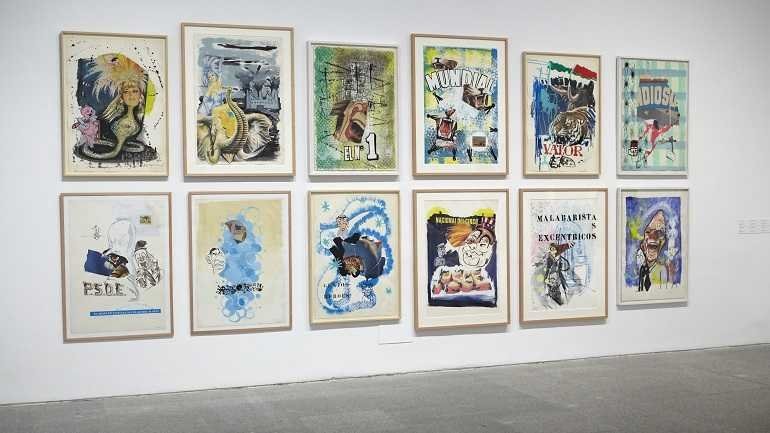Patricia Gadea
05 Nov 2014 - 05 Jan 2015
PATRICIA GADEA
Atomic-Circus
5 November 2014 - 5 January 2015
Atomic-Circus is the first retrospective devoted to the work of artist Patricia Gadea (Madrid, 1960 – Palencia 2006), a key figure in the revival of Spanish painting in the 1980s and 1990s. Her painting emerged at a time of experimentation with freedom, sheltered by the movida cultural movement in Madrid and an atmosphere of euphoria brought about by democratic change.
With links to artists from new figurative art, her work takes on comic elements, used alongside figures from popular culture and images from display advertising, through which she reflects on her own epoch. These elements are altered in her work by using collage techniques to offer a critical vision of reality; or in the words of the artist: “I like the feeling of the moment, the risk in my real history, where complexity can actually be very simple. Speaking ironically about different languages and distorted images.”
Her spell in New York, in the second half of the 1980s, represents a turning point in her career – it was in this city that Gadea formed the collective Estrujenbank, together with the painter Juan Ugalde and the poet Dionisio Cañas. The work inside the collective gave rise to a more politicised language, particularly evident in the Circus series, which satirically spotlights the model for promoting the image of Spain at the start of the 1990s and the disenchantment the democratic process had left behind. The circus is a metaphor that sees the logos of political parties and caricatured figures from the government share poster space with clowns, a female trapeze artist and a tiger, figures that would recurrently appear in her work from that point on.
Upon moving to Palencia in 1996, the city she would reside in until her death, her work became more intimate, serene and introspective, where paper as a medium took precedence, offering an aspect of fragility heightened by the sketched aesthetic of her most oneiric imagery. A series of these drawings, previously unexhibited, are displayed for the first time in this exhibition.
Atomic-Circus
5 November 2014 - 5 January 2015
Atomic-Circus is the first retrospective devoted to the work of artist Patricia Gadea (Madrid, 1960 – Palencia 2006), a key figure in the revival of Spanish painting in the 1980s and 1990s. Her painting emerged at a time of experimentation with freedom, sheltered by the movida cultural movement in Madrid and an atmosphere of euphoria brought about by democratic change.
With links to artists from new figurative art, her work takes on comic elements, used alongside figures from popular culture and images from display advertising, through which she reflects on her own epoch. These elements are altered in her work by using collage techniques to offer a critical vision of reality; or in the words of the artist: “I like the feeling of the moment, the risk in my real history, where complexity can actually be very simple. Speaking ironically about different languages and distorted images.”
Her spell in New York, in the second half of the 1980s, represents a turning point in her career – it was in this city that Gadea formed the collective Estrujenbank, together with the painter Juan Ugalde and the poet Dionisio Cañas. The work inside the collective gave rise to a more politicised language, particularly evident in the Circus series, which satirically spotlights the model for promoting the image of Spain at the start of the 1990s and the disenchantment the democratic process had left behind. The circus is a metaphor that sees the logos of political parties and caricatured figures from the government share poster space with clowns, a female trapeze artist and a tiger, figures that would recurrently appear in her work from that point on.
Upon moving to Palencia in 1996, the city she would reside in until her death, her work became more intimate, serene and introspective, where paper as a medium took precedence, offering an aspect of fragility heightened by the sketched aesthetic of her most oneiric imagery. A series of these drawings, previously unexhibited, are displayed for the first time in this exhibition.

